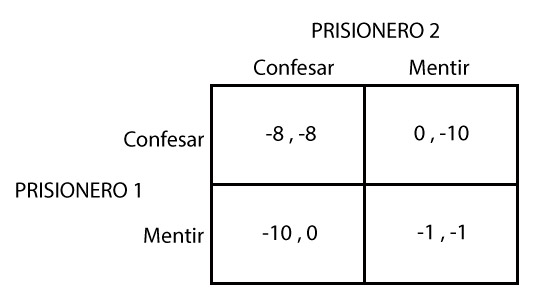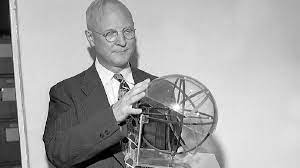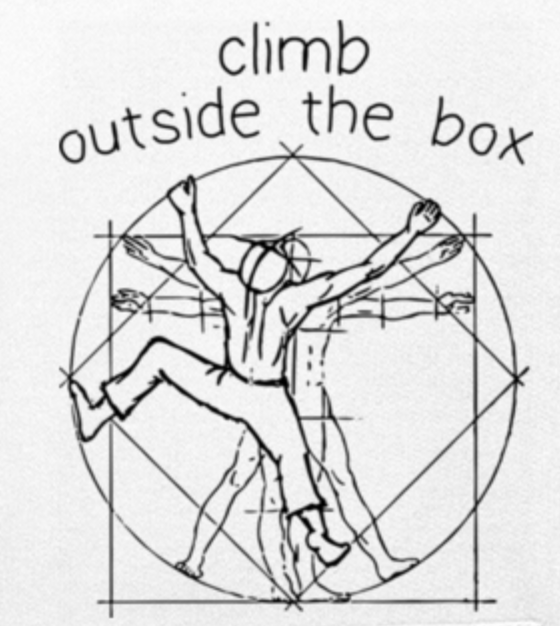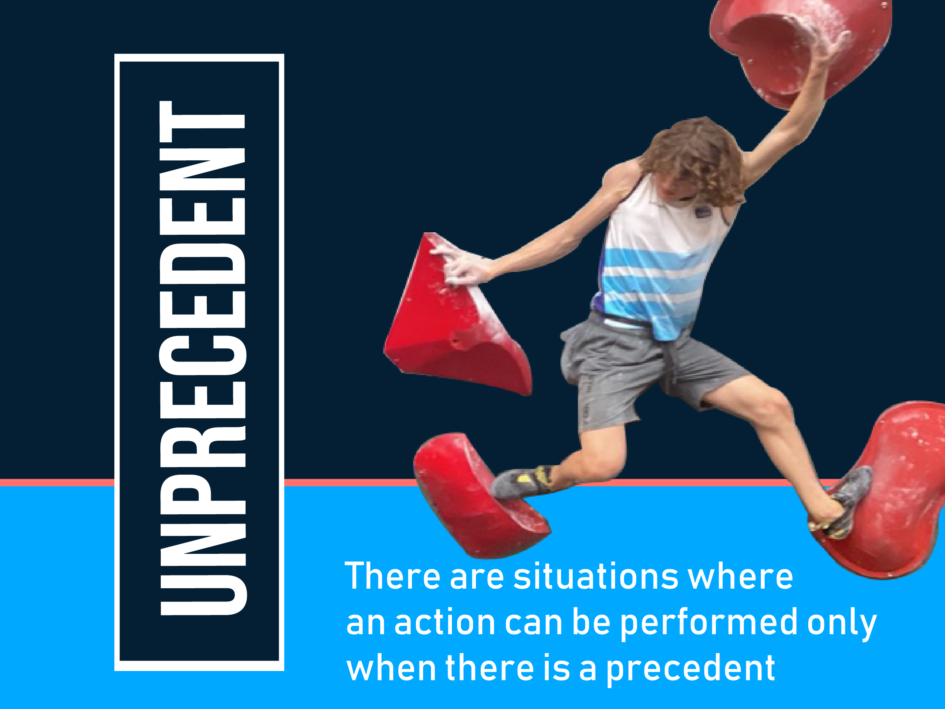There are situations where an action can be carried out only when there is a precedent, that is, if that action was previously learned or observed at the individual level. Often the absence of a precedent is the favorite public excuse for not doing something new. However, if the action cannot be done without precedent, then the action will never be done. Throughout the history of sport, it has been seen many times how a new action is copied and used by other athletes in subsequent competitions, once consecrated as a possible solution.
In a recently published work by Fukuda and Kamada (2022), based on von Neumann’s game theory, they were interested in player incentives when there is an action that needs a precedent. In the game that they proposed in their research, there can be two types of actions, the “old action” that players can play from the beginning and the “new action” that a player can perform only if they have learned it accidentally, privately or if the opponent has used it in the past. The first action is dominated by the Pareto law or 80/20 rule while the second action corresponds to a Nash equilibrium, where the strategy of each of the participants is optimal, according to the strategy used by the others. In other words, nobody will gain anything if they decide to change their strategy under the assumption that others do not change theirs.
The best-known example of this balance is the prisoner’s dilemma, where the police, in order to obtain evidence about a robbery committed by two prisoners, interrogate them in isolation and present them with the following options:
1- If you confess and your partner doesn’t, we release you and your partner gets 10 years in jail
2- If both confess, they get 8 years each
3- If neither of them confesses, they give each of them 1 year in jail
In this game, the Nash equilibrium is confess-confess, since neither player has sufficient incentives to change their decision considering what their partner will do.

In competitive climbing, the flash resolution of a problem or part of it (as it is in the World Youth Championships qualifiers in Boulder since 2021) can create a precedent for the rest of the competitors to have that alternative as valid when solving. Also in Lead, whoever manages to find a no-hands rest, or a non-obvious solution to a key move gets an advantage. The creative and risky options can have a double effect, on the one hand it allows the competitor to have the possibility to solve the problem, but at the same time it opens the doors so that the following competitors can solve it in the same way, putting the classification at risk of the competitor who showed the solution to the rest.
This possibility only occurs in flash climbing, where the participants can observe the resolution of the other competitors. Obviously, it will depend on the moment where the most creative solution by a competitor appears and the influence of that solution on the remaining number of competitors.
If the solution is not found at the moment, you have to appeal to creativity. For creative or innovative solutions to emerge, it is necessary to encourage them at all times. Mainly during training, options must be sought so that our athletes can develop their creative capacity, creating a space where the climber is stimulated and motivated to do so.
The psychologist J. P. Guilford, known for his studies on intelligence, coined the terms convergent and divergent thinking in 1956. These two types of thinking coexist to a greater or lesser extent in all people. It could be said that we are born with them and have the capacity to develop both, although we tend to develop one over the other.

We use convergent thinking when we focus on what we do from the outside towards the focus of our interest, following a process that leads us to the final solution. It is a thought of focus and attention, we bring our knowledge and our stimuli towards what we are doing. It is directed towards the correct solution of a problem and moves looking for a certain or conventional answer, therefore it finds a unique solution to the problems. Generally, the solution coincides with what some call the ideal technique.
Divergent thinking, on the other hand, is creative thinking. It is the one that uses the perception and stimuli of the environment to create something new or find an unusual solution. It is a search thought, which moves in various directions. Some authors call it lateral thinking (de Bono, 1994), which seeks a new way of seeing the situations and problems raised. It does not follow established logical patterns and is closely related to creativity. It is a thought that proposes a new way of approaching situations, logical thought patterns are not followed, and nothing is taken for granted and finished, everything is questioned. Even from physiology it is known that the neurotransmitter dopamine plays a crucial role in human creative behavior. Specifically, striatal dopamine appears to be associated with specific dimensions of divergent thinking performance, especially with ideas diversity (flexibility). An adequate level of dopamine can facilitate the generation of original ideas through the exploration of various conceptual categories, that is, greater flexibility (Agnoli et als, 2021).
The coach has the possibility to use various teaching styles to encourage creativity through divergent thinking. Mosston and Ashworth (1986) divide teaching styles into two groups: those that seek the objective of reproduction and those that seek the objective of production. The former are based on the premise of the ideal and optimal technique and the latter appeal to the development of creative motor solutions by the student. The entire range of teaching styles falls between these two groups, and the division is known as the Discovery Threshold. Within the group of production styles are, among others, guided discovery and the Divergent style, or Problem Solving. Let’s see the characteristics of both:
Guided Discovery:
- The coach through questions leads to answers from the student
- Seeks the conscious participation of the student in the process of discovering the solution to the problem posed.
- It is not taught by a unique model or perfect technique
Using the interrogation, the trainer/teacher will guide the student’s answers to achieve the resolution of the problem posed.
Divergent or Problem Solving
- It consists of making students discover alternative solutions to problems
- The student makes decisions about the tasks, is the protagonist of the process
- The trainer reinforces the answers, all are valid when solving the task
- The student decides which of the solutions are applicable to the problem and is encouraged to seek alternative solutions
The athlete must know that there may be other forms of resolution, this keeps the cognitive process awake and leads to inquiry, and therefore to the discovery of a creative solution.

In the context of the ecological model called Constraints Led Approach, which I have already mentioned in previous articles, the coach/teacher, through the conscious modification of environmental conditions, acts mainly on two aspects (Otte et als, 2019):
1) the ability of the athlete to adapt and carry out functional movement solutions in relation to the combinations of the determinants of the task, the environment and the organism
2) the constant coupling of perception and action with movements.
The first aspect is related to the problem of the degrees of freedom of Bernstein (1967), which requires the athlete to be able to control the degrees of freedom that his motor system has to develop coordinative structures of movement, and the second aspect with the theory from Gibson’s (1979) affordances, where the opportunities for action in the environment act as information for motor performance and decision-making. It consists of being able to decipher through perception all the possibilities offered by the environment, holds and volumes, both in their shape and size as well as in relation to the rest of the holds and volumes, which will provide a nested set of opportunities. to solve the problem posed.
All these actions imply the conscientious work of the coach, preparing and planning each of the sessions, not only from the physical, technical, tactical point of view, but also from all aspects necessary to stimulate creativity in the athletes. Adapting the environment and taking it to the real possibilities of each athlete implies having a broad knowledge of the sport and mastering the art of routesetting, or having a team of routesetters at your disposal. The commercial or preset setting on a climbing wall without regard to the content of the session and the anthropometric characteristics of the athletes goes against the principle of individualization , and for this it is necessary to have the possibility of constantly modifying the environment to achieve the objectives set.

References:
Agnoli, S., Mastria, S., Zanon, M., & Corazza, G. E. (2022). Dopamine supports idea originality: The role of spontaneous eye blink rate on divergent thinking. Psychological Research. Advance online publication
Bernstein, N.A. (1967) The Co-Ordination and Regulation of Movements. Pergamon Press, Oxford
De Bono, E. (1994). El pensamiento creativo: El poder del pensamiento lateral para la creación de nuevas ideas (ed.–.). Barcelona, España: Paidos.
Fukuda, S., Kamada, Y. (2022). Unprecedented. American Economic Journal: Microeconomics 14 (1), 216-44, 2022. 1, 2022.
Gibson, J. J. (1979). The ecological approach to visual perception. Boston: Houghton Mifflin.
Mosston, M. y Ashworth, S. (1986). La enseñanza de la Educación Física. Barcelona, España, Editorial Hispano Europea S.A.
Otte, FW; Millar, S-K; Klatt, S. (2019).Skill Training Periodization in “Specialist” Sports Coaching—An Introduction of the “PoST” Framework for Skill Development.Frontiers in Sports and Active Living


Leave a Reply